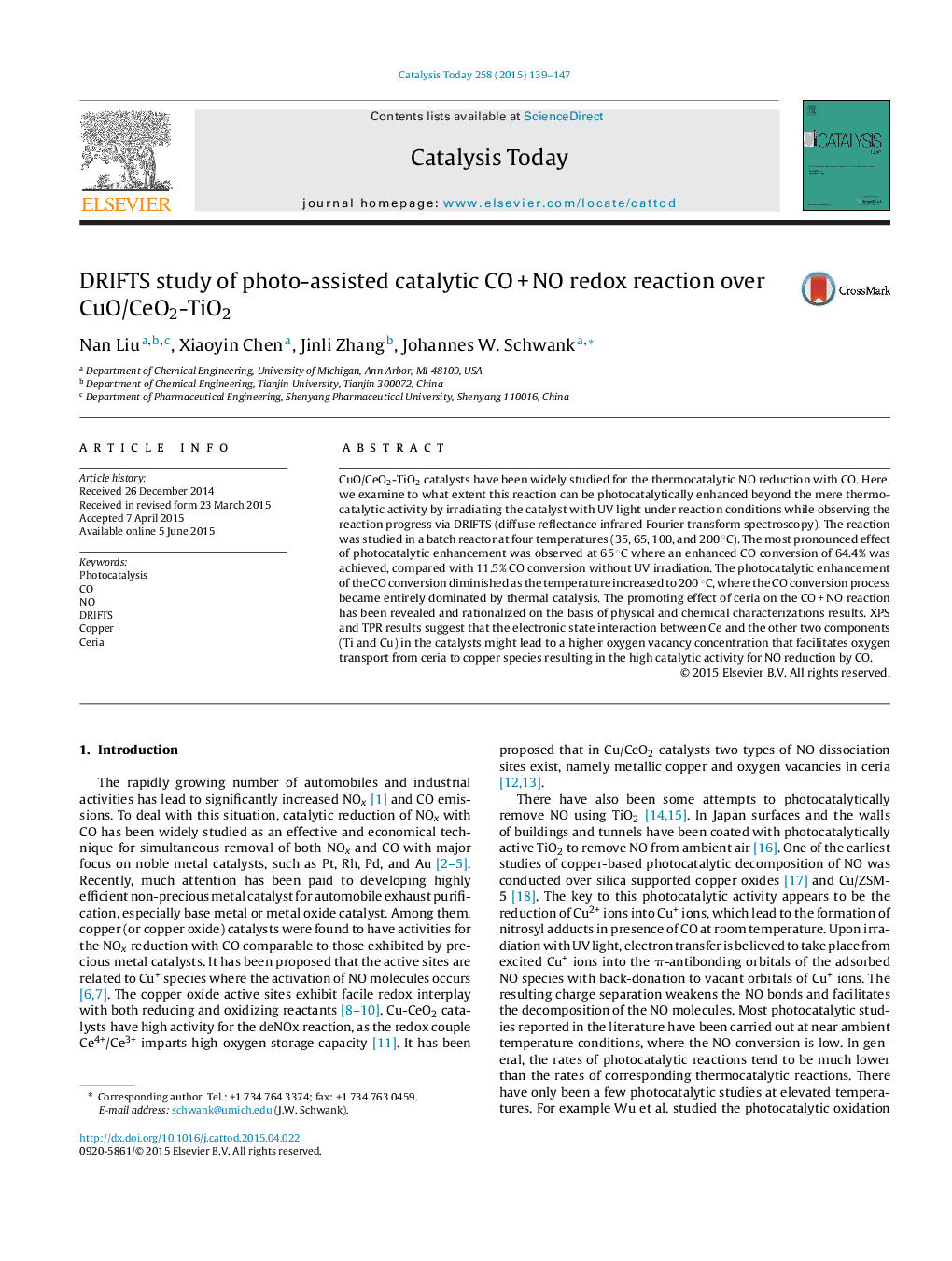| Article ID | Journal | Published Year | Pages | File Type |
|---|---|---|---|---|
| 53896 | Catalysis Today | 2015 | 9 Pages |
•Photocatalytic NO + CO redox reaction over CuO/CeO2-TiO2 was studied via in situ drifts.•The most pronounced photocatalytic activity was observed at 65 °C.•A promoting role of ceria on CO + NO reaction has been revealed.•A higher oxygen vacancy concentration, which facilitates oxygen transport from ceria to copper sites, contributes to the enhanced photocatalytic activity.
CuO/CeO2-TiO2 catalysts have been widely studied for the thermocatalytic NO reduction with CO. Here, we examine to what extent this reaction can be photocatalytically enhanced beyond the mere thermocatalytic activity by irradiating the catalyst with UV light under reaction conditions while observing the reaction progress via DRIFTS (diffuse reflectance infrared Fourier transform spectroscopy). The reaction was studied in a batch reactor at four temperatures (35, 65, 100, and 200 °C). The most pronounced effect of photocatalytic enhancement was observed at 65 °C where an enhanced CO conversion of 64.4% was achieved, compared with 11.5% CO conversion without UV irradiation. The photocatalytic enhancement of the CO conversion diminished as the temperature increased to 200 °C, where the CO conversion process became entirely dominated by thermal catalysis. The promoting effect of ceria on the CO + NO reaction has been revealed and rationalized on the basis of physical and chemical characterizations results. XPS and TPR results suggest that the electronic state interaction between Ce and the other two components (Ti and Cu) in the catalysts might lead to a higher oxygen vacancy concentration that facilitates oxygen transport from ceria to copper species resulting in the high catalytic activity for NO reduction by CO.
Graphical abstractFigure optionsDownload full-size imageDownload high-quality image (153 K)Download as PowerPoint slide
